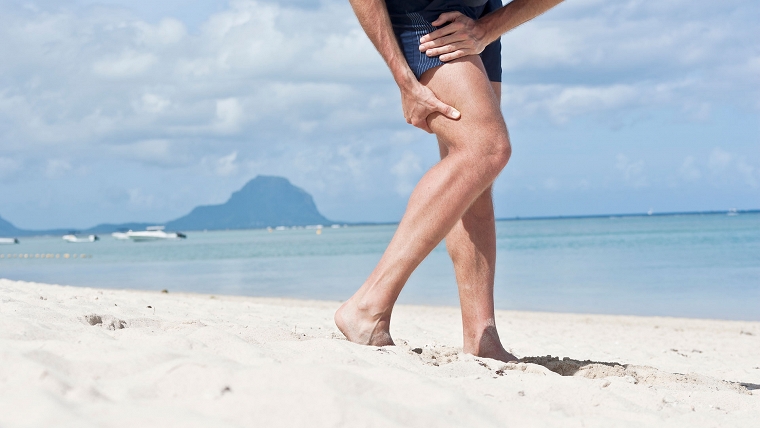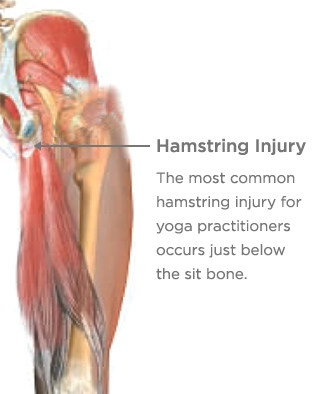Yoga students are vulnerable to overstretching the hamstring muscle
and tearing the connecting tendon. Follow these tips to avoid—or even
heal—hamstring injuries.

Ask any room of yoga students whether they suffer from pain at one or both of their sit bones, and you can count on a showing of hands. This kind of pain comes from injury to the hamstring attachment. Of course, hamstring injuries are not unique to yoga, though the cause and treatment of this particular problem often is. The more dramatic hamstring tears occur in sports and especially while running, when athletes are tightly wound and move in sudden bursts that wrench and tear at the hamstrings, usually in the “belly,” or middle part, of the muscle. In yoga, the injury occurs in a different way and at a different place.

For people who practice yoga, hamstring injuries develop over time, usually where the hamstring attaches to the sit bone. This is a tendon injury, and unlike a muscle tear, it doesn’t happen suddenly. Instead, it is “death by a thousand cuts”: each tiny rip in the tendon is relatively minor by itself, but because it does not fully heal, repeated injuries accumulate over time, until an ill-considered bit of overstretching or an overly aggressive adjustment from a teacher finally puts the injury over the edge.
Tendon injuries are in a class by themselves. They require a specific
regime for healing that is very simple but requires time, patience, and
persistence. The alternative, however, is even less attractive. Left
alone, an injury to the hamstring attachment can take six months to a
year to stop hurting—and even then it does not mean that it has fully
healed. The attachment remains far more susceptible to re-injury than a
tendon that has been properly treated.

No comments:
Post a Comment
Note: Only a member of this blog may post a comment.